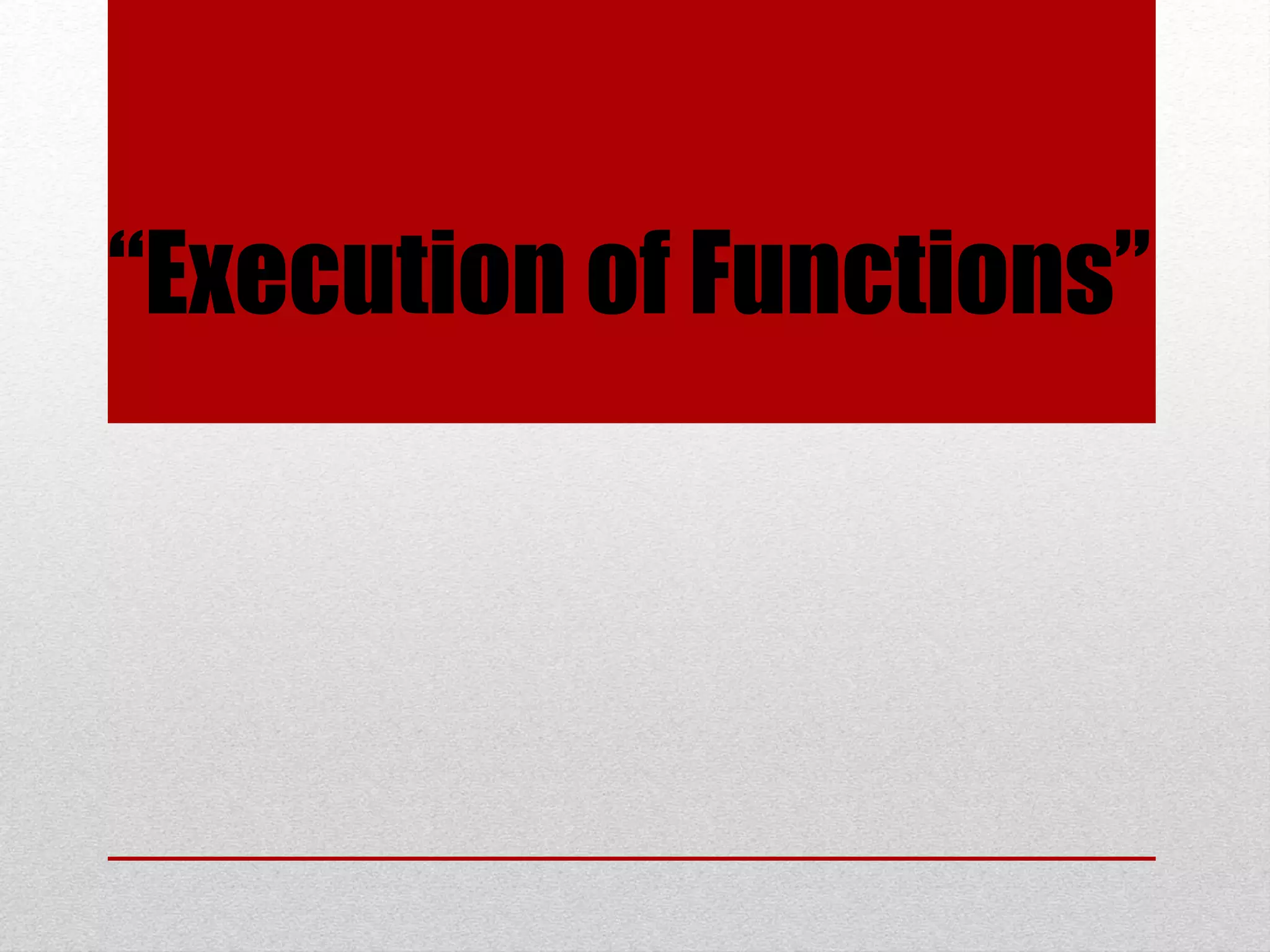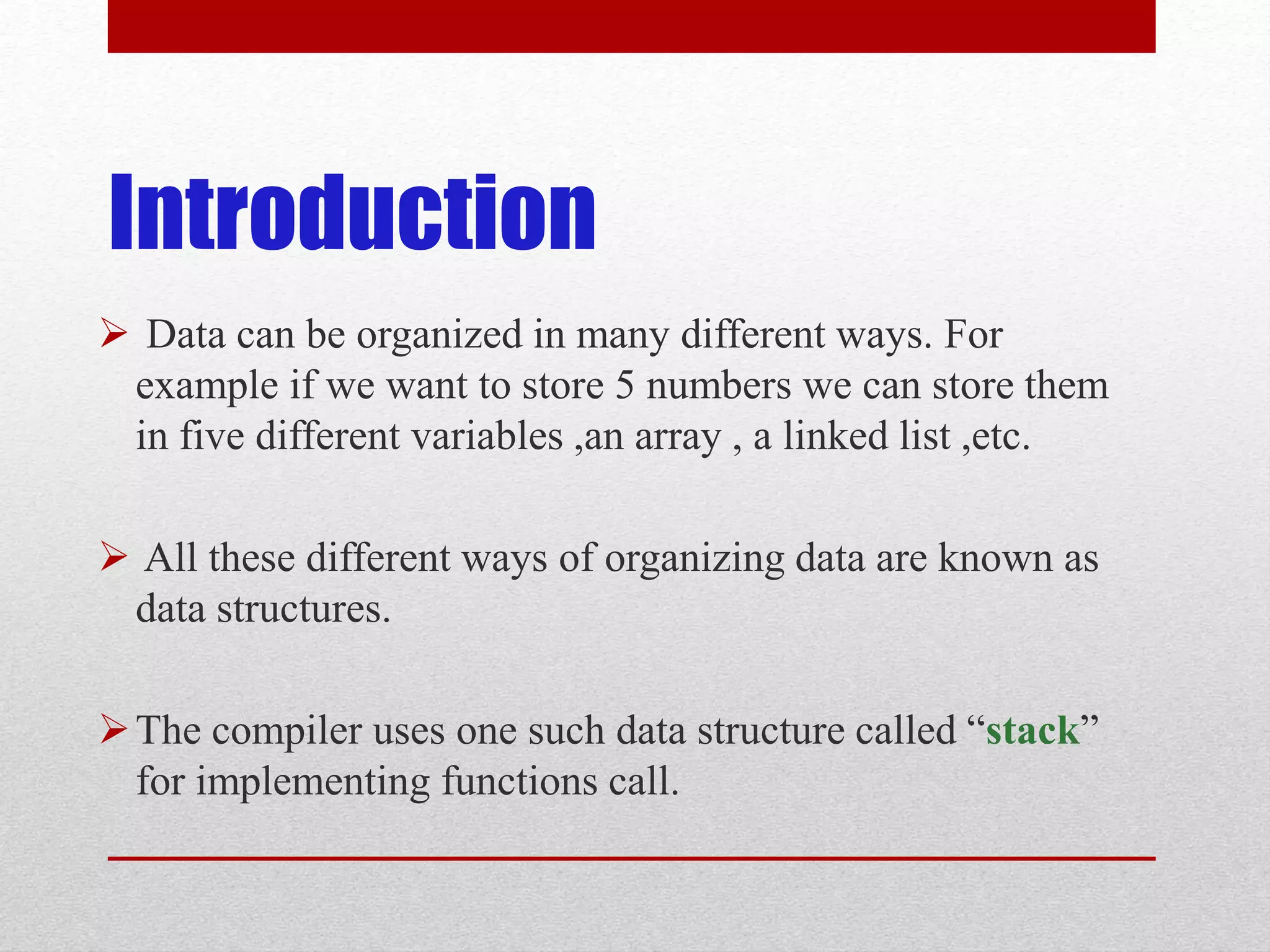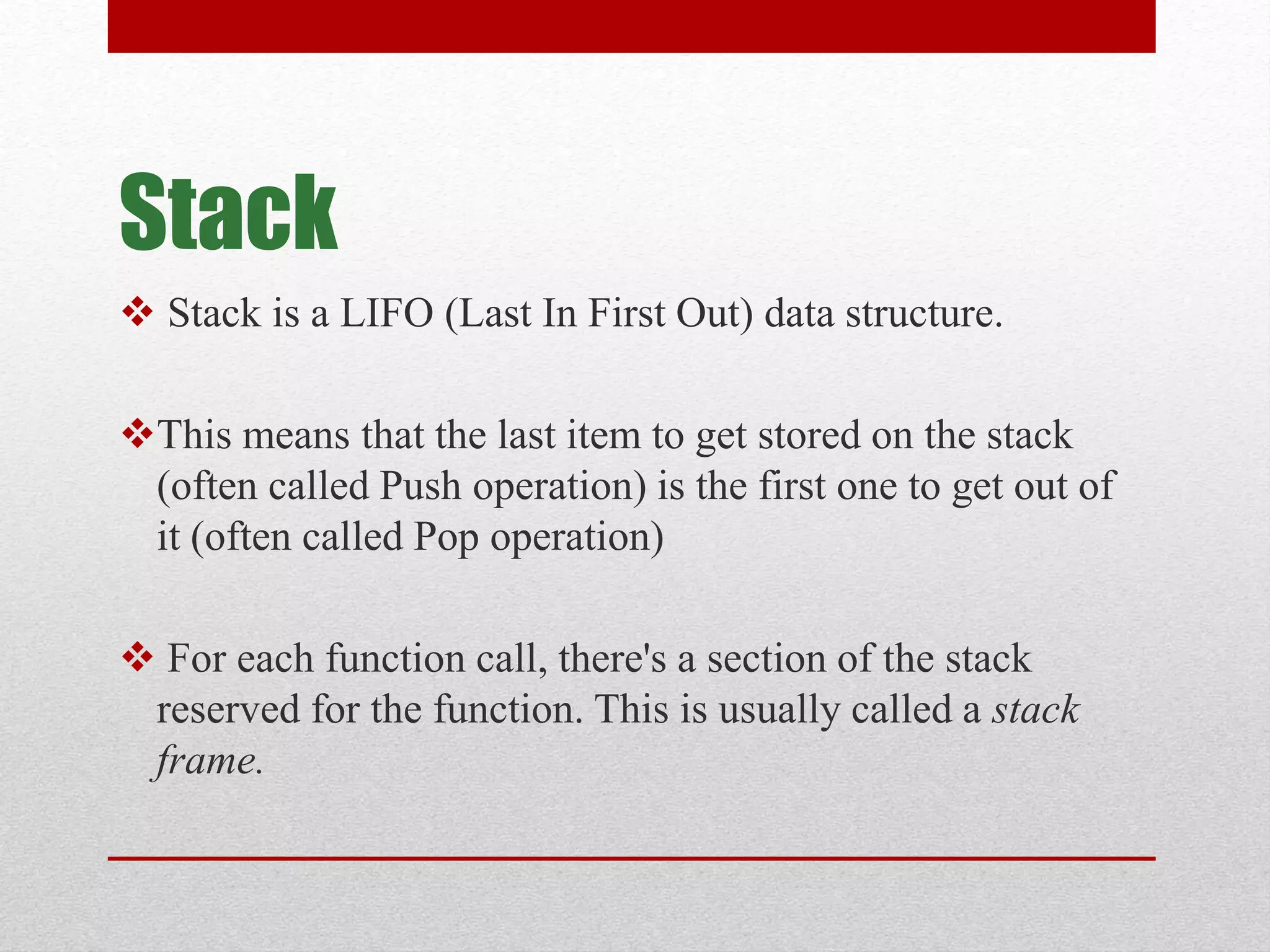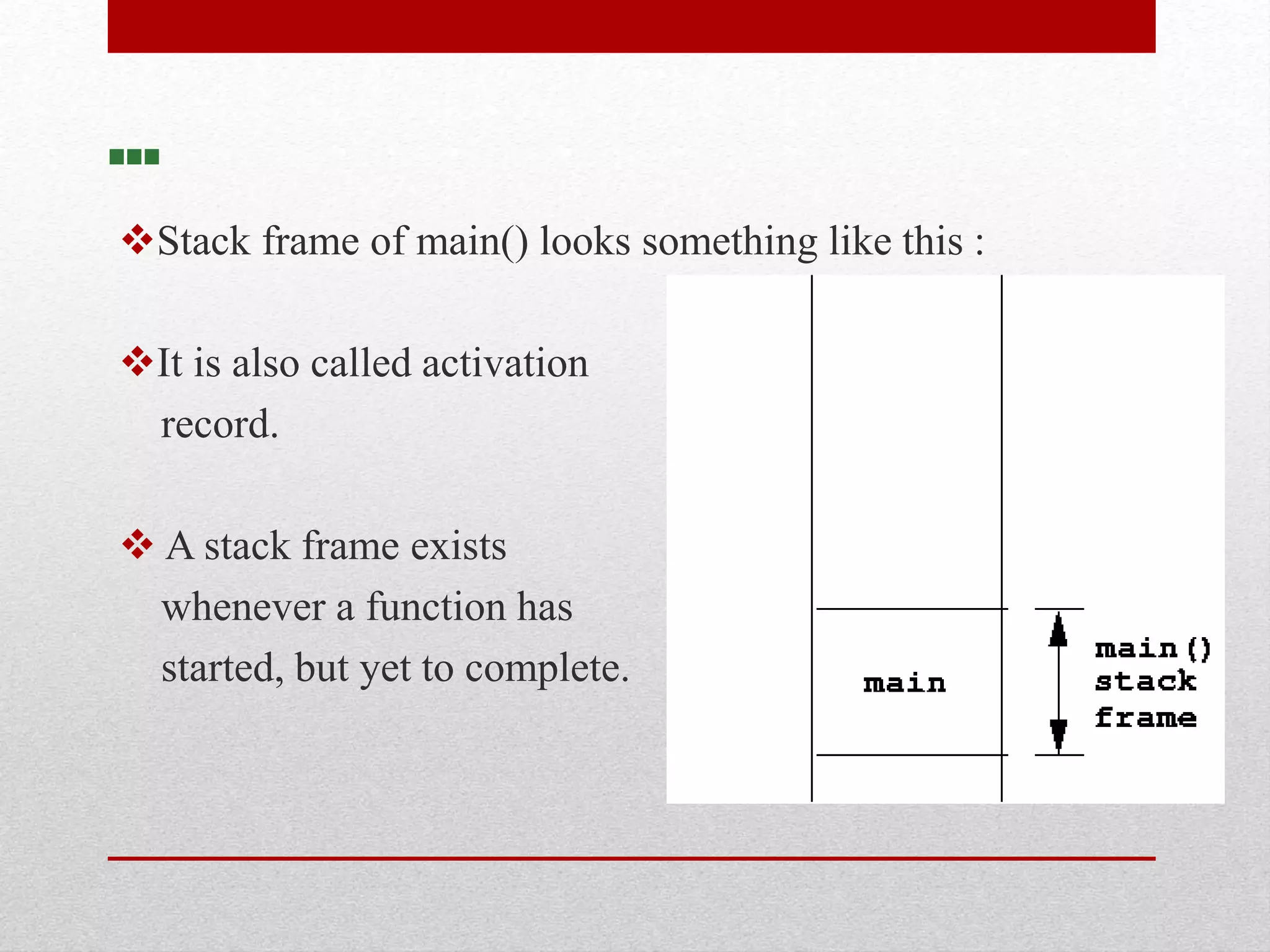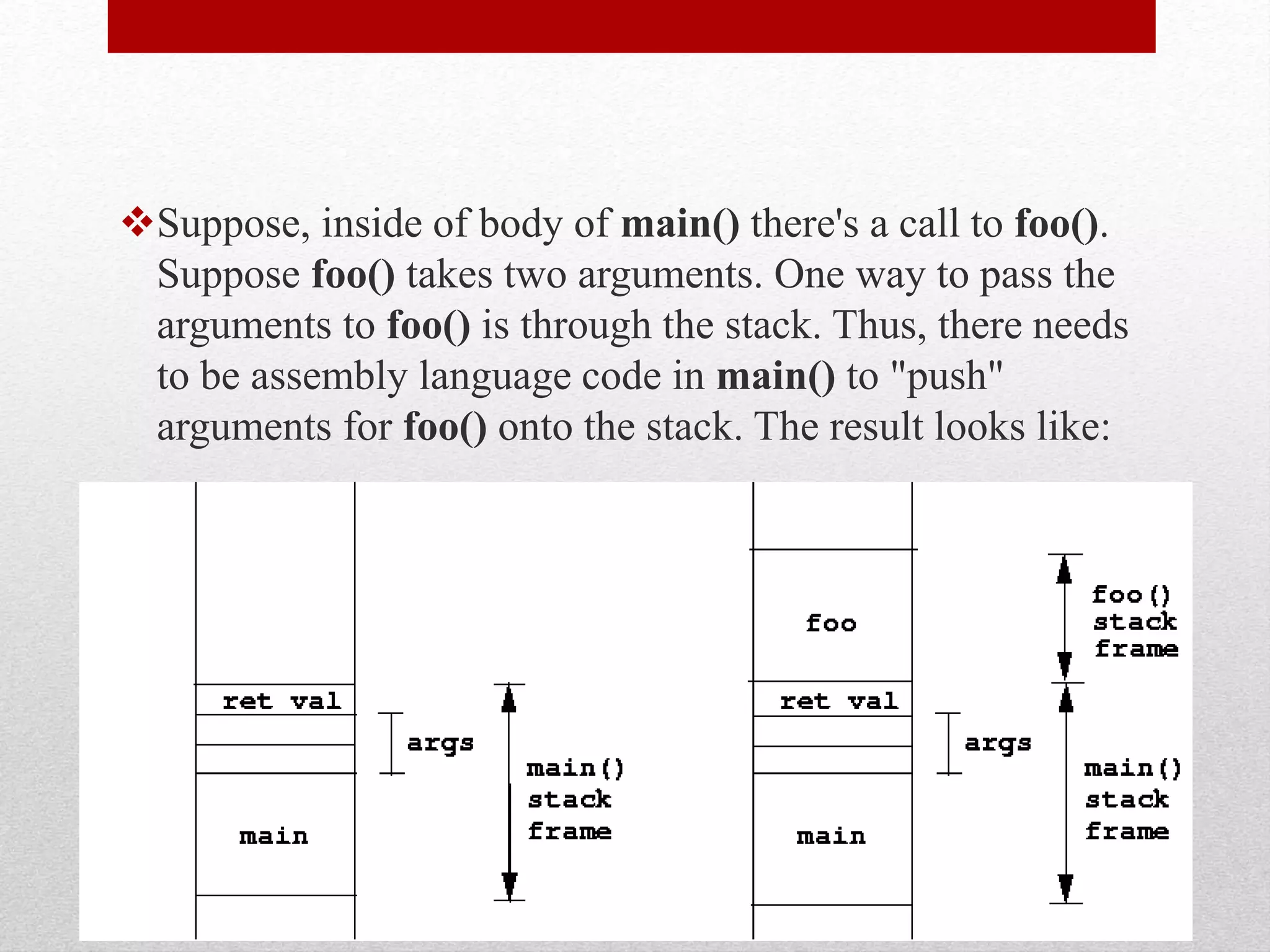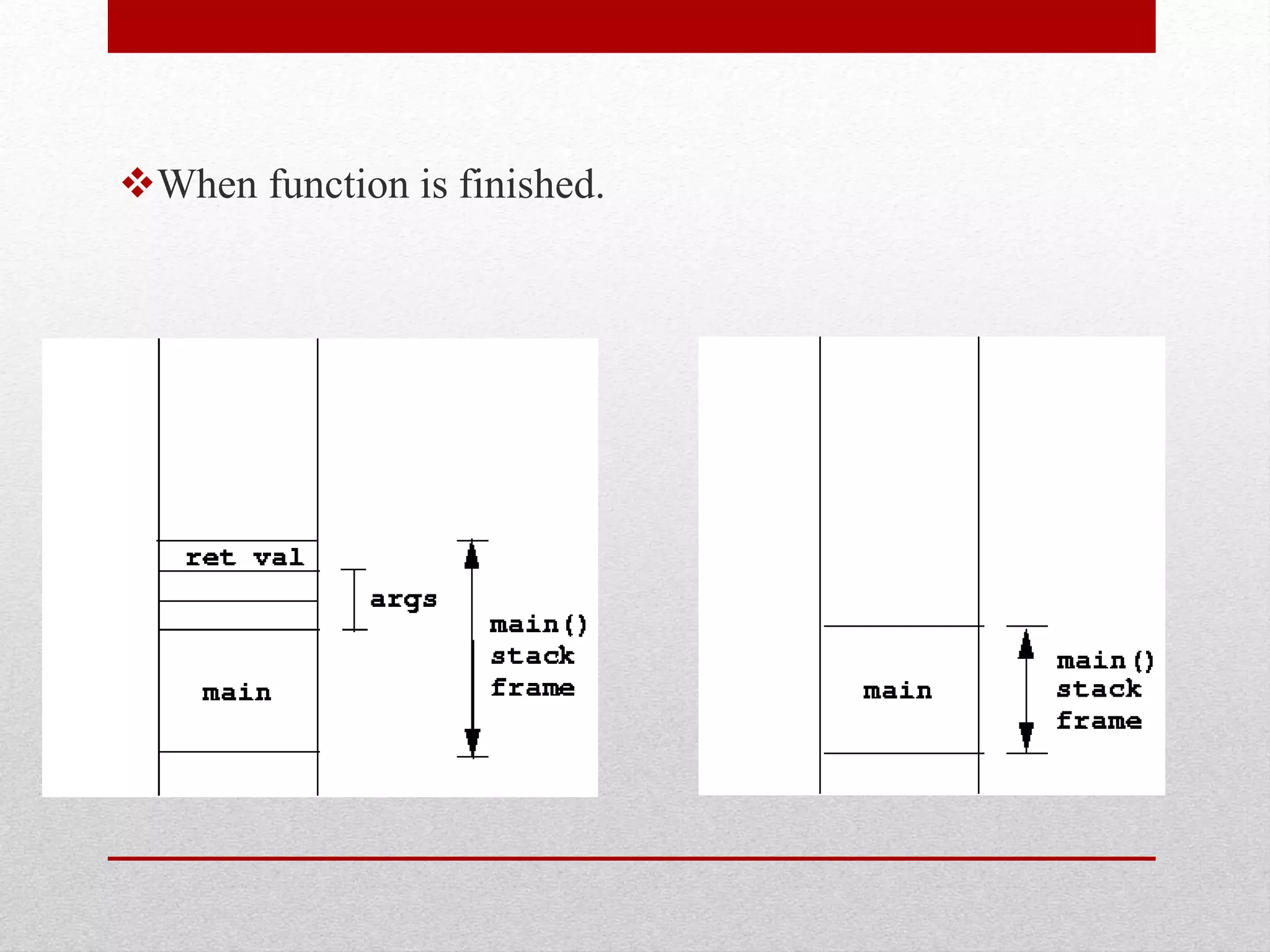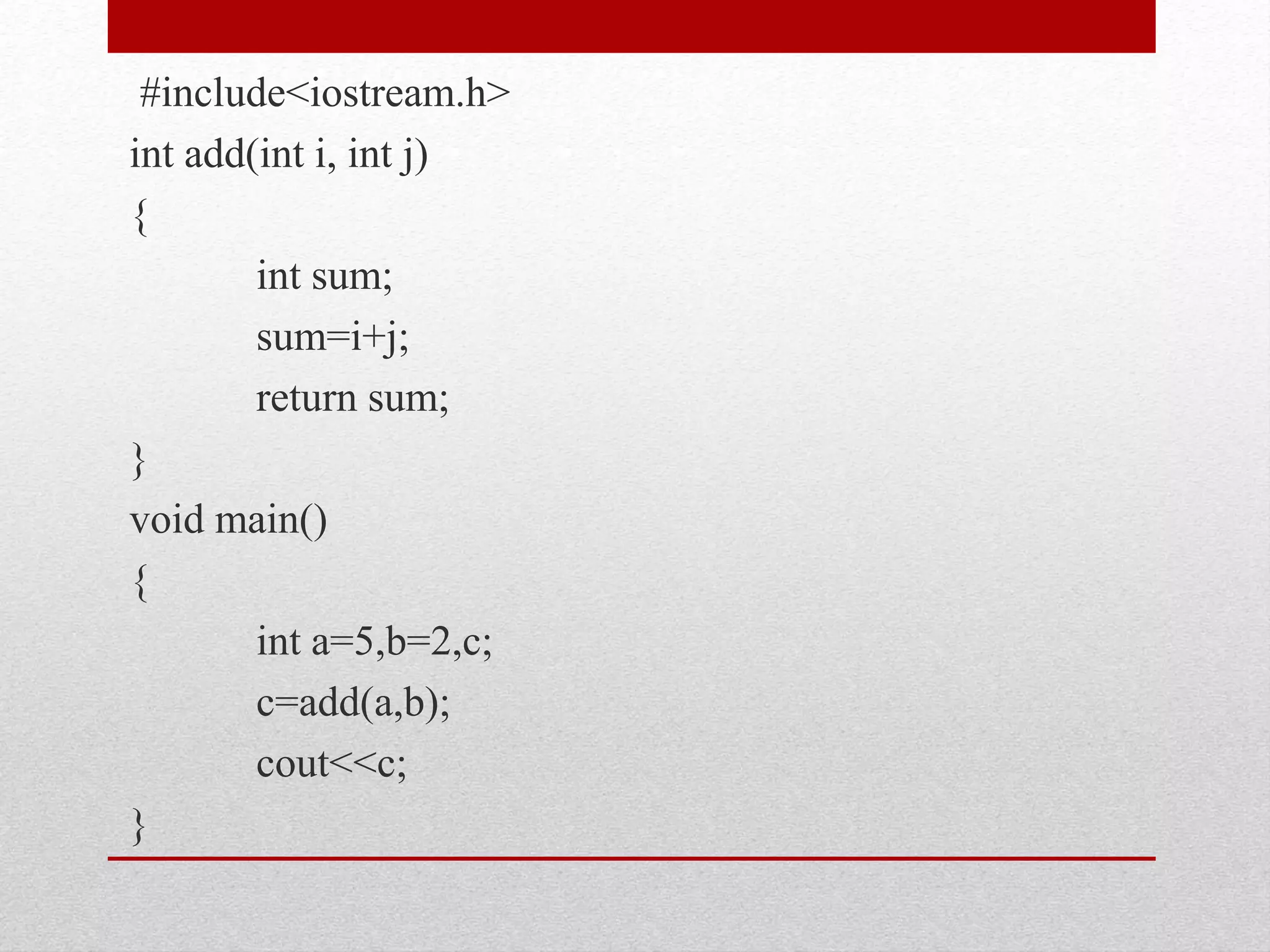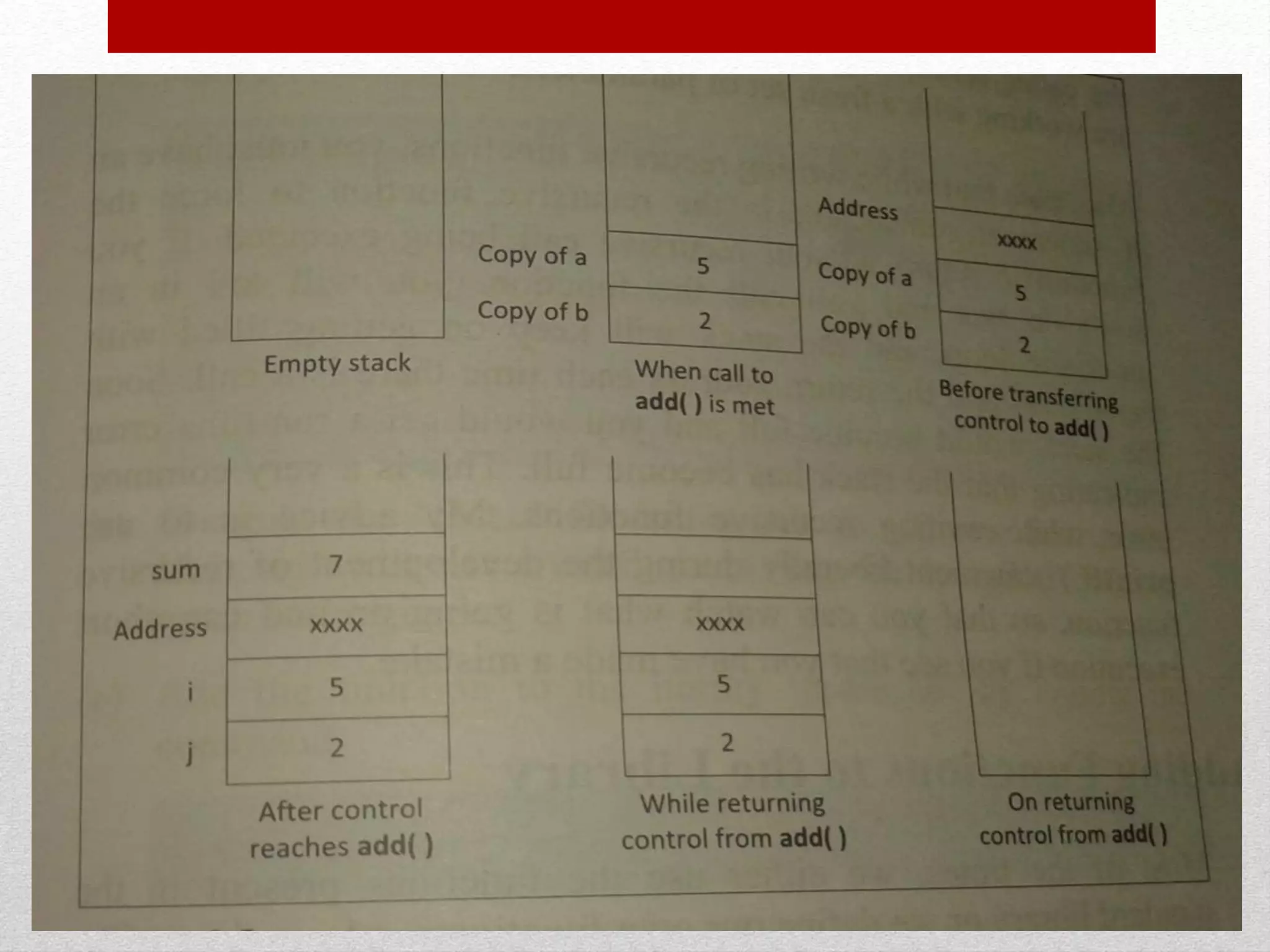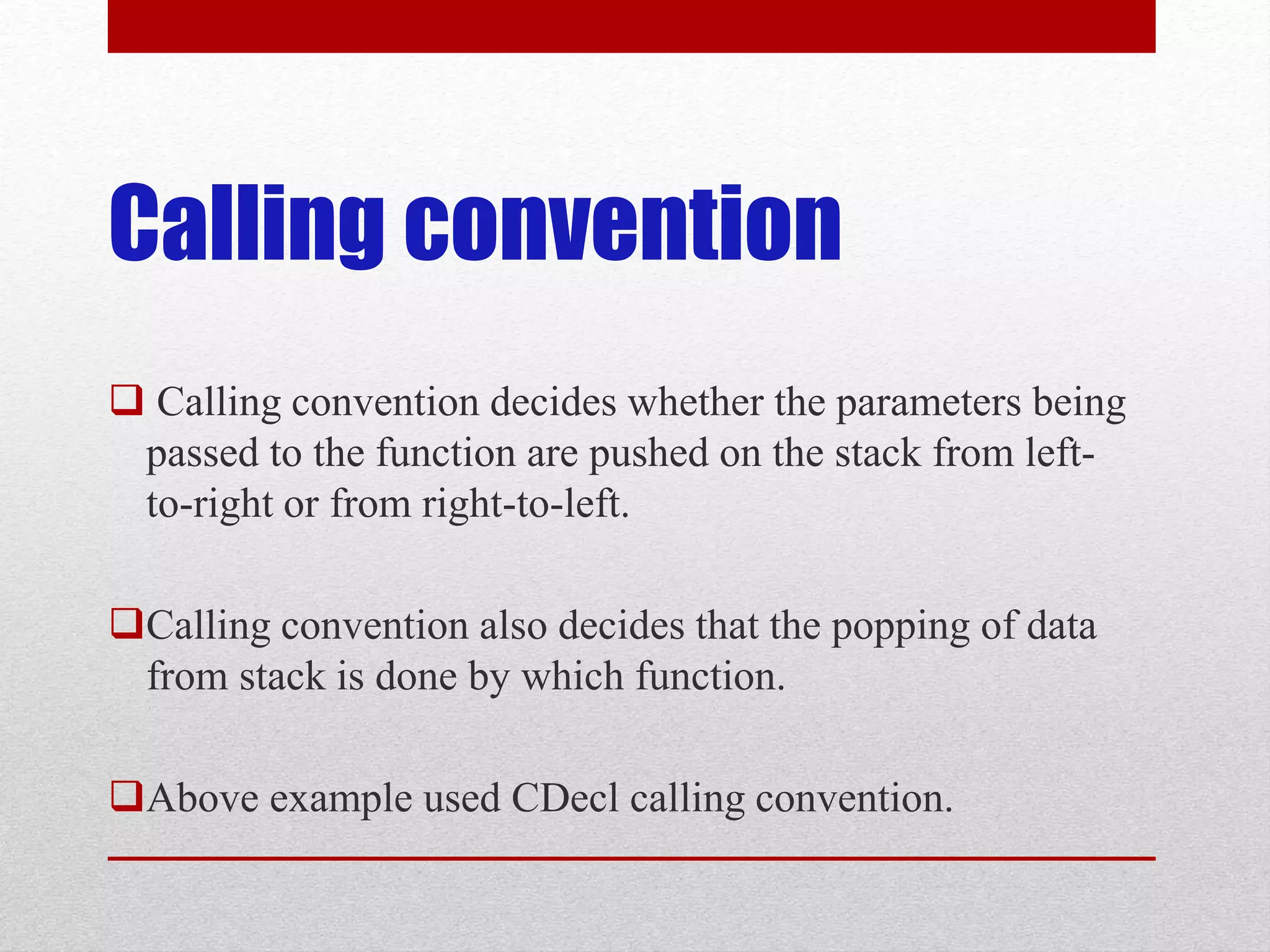This document discusses how functions are executed using a stack data structure. It explains that the stack is a LIFO data structure used by the compiler to implement function calls. When a function is called, a stack frame is created to store its arguments, local variables, and return address. Arguments are pushed onto the stack before the function call and popped off after the function returns. An example demonstrates how the main function pushes arguments for a call to the foo function onto the stack, and how the stack frame looks when the function finishes executing.
